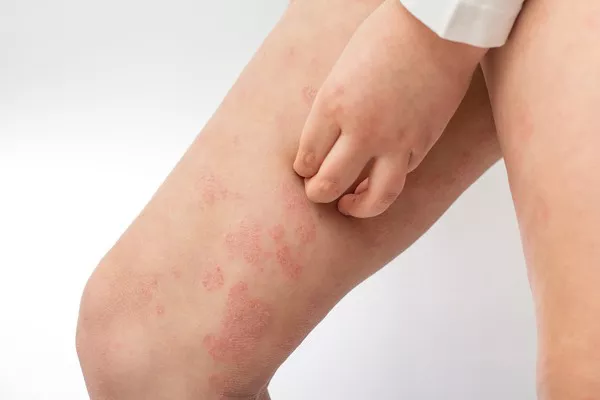Shingles, also known as herpes zoster, is a viral infection caused by the varicella-zoster virus—the same virus responsible for chickenpox. This condition typically manifests as a painful rash on one side of the body, often accompanied by fluid-filled blisters. While medical treatment, such as antiviral medications, can help alleviate symptoms and shorten the duration of the illness, dietary choices can also play a crucial role in managing shingles.
A well-balanced diet rich in vitamins, minerals, and antioxidants can support the immune system and aid in the body’s recovery process. However, certain foods may exacerbate symptoms or interfere with medication efficacy, making it essential to be mindful of dietary choices during a shingles outbreak. In this article, we will explore the foods to avoid when dealing with shingles and provide alternative options to help alleviate discomfort and promote healing.
The Importance of Diet in Shingles Management
Before delving into specific foods to avoid, it’s important to understand the rationale behind dietary recommendations for individuals with shingles. A healthy diet can help boost the immune system, reduce inflammation, and support the body’s natural healing processes. Conversely, consuming foods that trigger inflammation or weaken the immune system can worsen symptoms and prolong recovery.
Furthermore, certain dietary factors can interact with medications commonly prescribed to treat shingles. For example, some foods may interfere with antiviral drugs’ absorption or increase their side effects, compromising their effectiveness in combating the virus.
Foods to Avoid with Shingles
1. High Arginine Foods: Arginine is an amino acid that can exacerbate the replication of the herpes zoster virus, potentially prolonging the duration of shingles outbreaks. Foods high in arginine include nuts (such as almonds, peanuts, and cashews), seeds (such as pumpkin and sunflower seeds), and chocolate. While these foods can be part of a healthy diet in moderation, individuals with shingles may benefit from reducing their intake during outbreaks.
2. Processed Foods: Processed foods, including fast food, packaged snacks, and sugary treats, are often high in unhealthy fats, refined carbohydrates, and artificial additives. These ingredients can promote inflammation in the body and weaken the immune system, making it more challenging to fight off infections like shingles. Opting for whole, unprocessed foods such as fruits, vegetables, whole grains, and lean proteins can provide essential nutrients without exacerbating symptoms.
3. Spicy Foods: Spicy foods, such as chili peppers and hot sauces, can irritate the skin and exacerbate shingles-related pain and discomfort. Additionally, spicy foods may trigger inflammation in some individuals, further intensifying symptoms. While the tolerance for spicy foods varies from person to person, it’s advisable to avoid excessively spicy dishes during a shingles outbreak to minimize discomfort.
4. Acidic Foods: Acidic foods, including citrus fruits, tomatoes, and vinegar-based condiments, can irritate the skin and exacerbate shingles-related pain and itching. These foods may also trigger acid reflux or heartburn, which can be particularly uncomfortable for individuals already experiencing discomfort from the rash and blisters. Choosing low-acid alternatives such as bananas, apples, and green vegetables can help reduce irritation and promote healing.
5. Alcohol and Caffeine: Alcohol and caffeine can dehydrate the body and interfere with sleep, both of which are crucial for supporting the immune system and promoting healing. Furthermore, alcohol and caffeine can interact with certain medications commonly prescribed for shingles, potentially exacerbating side effects or reducing their effectiveness. Limiting or avoiding alcohol and caffeine consumption during a shingles outbreak can help optimize recovery and symptom management.
SEE ALSO: What Are the After Effects of Shingles in the Elderly
Alternative Food Choices for Shingles Relief
While it’s important to avoid certain foods during a shingles outbreak, there are plenty of nutritious alternatives that can help alleviate symptoms and support the body’s healing process. Here are some food choices to consider:
1. Lean Protein: Incorporate lean sources of protein such as poultry, fish, tofu, and legumes into your diet to support muscle repair and immune function without exacerbating symptoms.
2. Omega-3 Fatty Acids: Foods rich in omega-3 fatty acids, such as salmon, walnuts, and flaxseeds, have anti-inflammatory properties that may help reduce shingles-related pain and inflammation.
3. Antioxidant-Rich Fruits and Vegetables: Consume plenty of colorful fruits and vegetables, such as berries, leafy greens, and bell peppers, to provide essential vitamins, minerals, and antioxidants that support immune health and promote healing.
4. Whole Grains: Choose whole grains such as brown rice, quinoa, and oats over refined grains to provide sustained energy and essential nutrients without spiking blood sugar levels.
5. Herbal Teas: Enjoy soothing herbal teas such as chamomile, ginger, and peppermint to hydrate the body, promote relaxation, and alleviate shingles-related discomfort.
Conclusion
Managing shingles involves more than just medical treatment—it also requires attention to dietary choices that can either support or hinder the body’s natural healing processes. By avoiding foods that exacerbate inflammation or interfere with medication efficacy and incorporating nutritious alternatives that support immune function and promote healing, individuals with shingles can optimize their recovery and alleviate symptoms more effectively. Consulting with a healthcare professional or registered dietitian can provide personalized guidance on dietary strategies to manage shingles symptoms and promote overall well-being.
Related Topics:


























